Italian-style kitchens: design features and beautiful examples
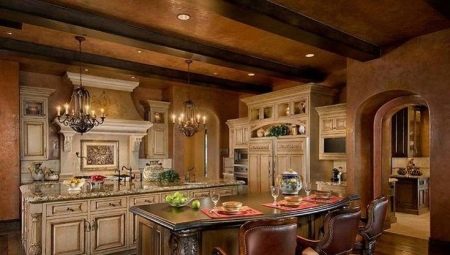
Italy is a wonderful country where everything is saturated with a special flavor. Despite the seeming negligence, the Italian style is thought out to the smallest detail. It seems that things and furniture are in a chaotic order, but everything is in its place, and each thing has a special meaning. This design direction is particularly comfortable. And the kitchen is no exception. After all, housewives spend a long time here, so everything in this room should help ensure that the dishes are the most delicious, and the atmosphere becomes friendly and sincere.
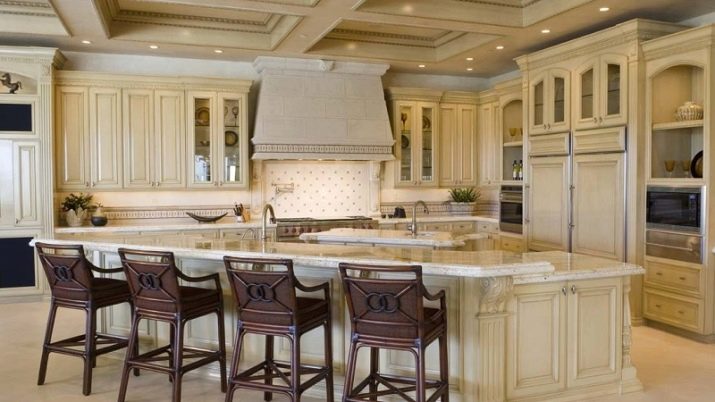

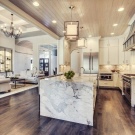

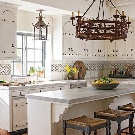
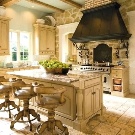
Features of stylistics
The Italian style, like other similar styles, originated in ordinary country houses. It is not inherent in the pomp of rich castles. Here simplicity is blended with classical symmetry. The Italian style is otherwise called Tuscan. Due to its location between the sea and the mountains, the inhabitants of this area tried to make furniture and other interior items from natural materials. Marble has been mined in this region for a long time, therefore natural stone products are also the basis of the Italian style.
Italian craftsmen made furniture by hand, honing their skills every year. No wonder that furniture from Italy is still very popular today, and is appreciated for its reliability, beauty and durability.


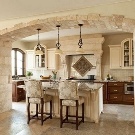

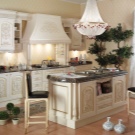
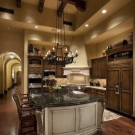
Going into any Italian home, you can surely see an abundance of stone, ceramics, wood and clay. In such a house there is no place for products made of plastic or glass, or made of chrome-plated steel.When choosing materials, you should give preference to wood, matte stone, terracotta tiles or porcelain stoneware. These materials are more suitable for the floor. The floor in any kitchen used to be only stone. Today, designers prefer marble or mosaic coverings, or options that imitate expensive materials.
Do not use paint and varnish. The highlight of the style is the natural texture of the coating. To protect the parquet from moisture, special impregnations are used.
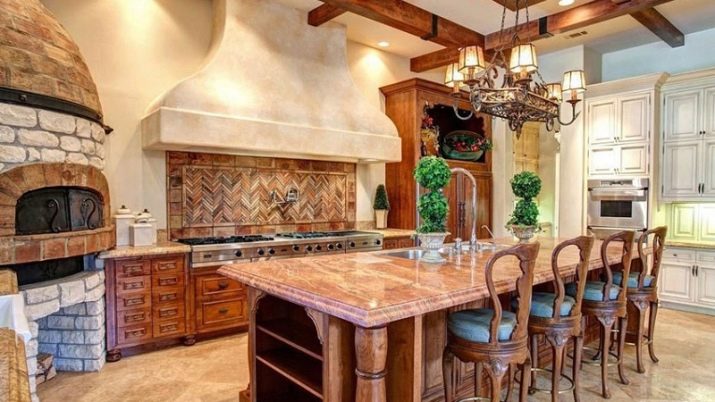


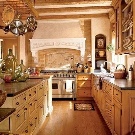


How to register?
When decorating a kitchen in Italian style, you need to take into account that seemingly incompatible things are combined here. So, in one room, the chic of palace halls can coexist with provincial simplicity. Italian style means:
- the use of a large number of natural materials;
- the presence of kitchen furniture with spacious drawers;
- the central place in the room should be occupied by a table with solid chairs or a bench, because the whole big Italian family should gather in this place for a meal;
- the use of a large number of decorative elements, mosaics, paintings and panels;
- warm colors should prevail in the kitchen.
A slight negligence in the interior gives the room a special comfort and charm.
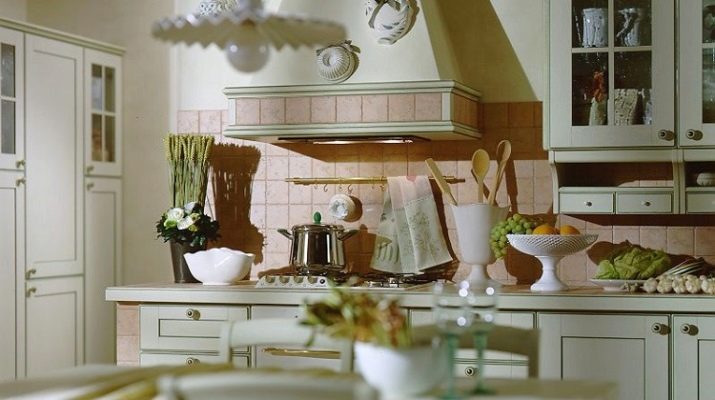
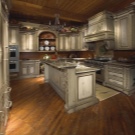
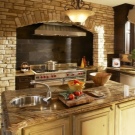
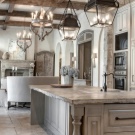
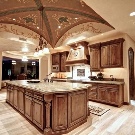
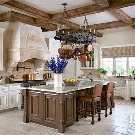
Furniture selection
A room decorated in Italian style should not contain a large amount of furniture and interior items made of modern artificial materials. There is no room for plastic furniture in the kitchen. Do not overuse glass products. The best option would be to choose furniture. from natural materials. The table and chairs are best made of wood. In this case, you can use different colors of products, their texture can also be different. The interior of the Italian kitchen benefits from a large number of wood furnishings of various textures. Usually the dining group is a large massive table with solid legs, decorated with carved or forged elements.
When choosing chairs, do not pay attention to small stools or cocktail counters. Italian design implies the presence of comfortable and solid wood chairs with a back. Often, when decorating a room in this style, special fabric chair covers are used. And you can also use solid pillows that are attached with strings. Such additions emphasize the sophistication of the room, give it a special atmosphere and comfort. Fabric chair covers are often decorated with floral prints.
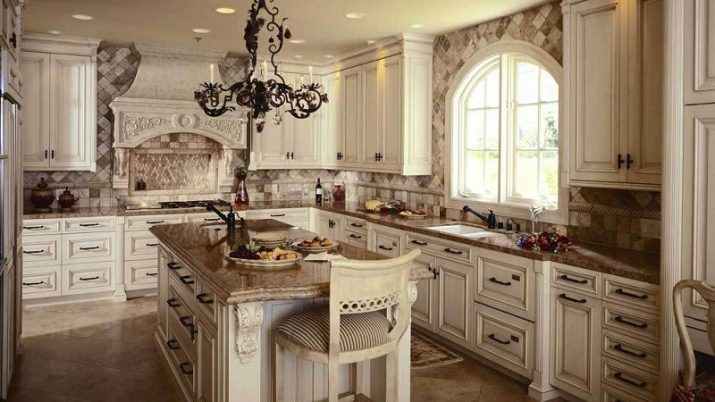

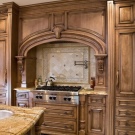
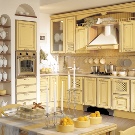
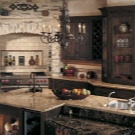
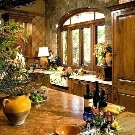
Lighting
When designing a kitchen in Italian style, do not forget about lighting, because it plays an important role. The kitchen should be light, there should always be a lot of sun and light in it. It is appropriate in the room to hang a large crystal chandelier in the center above the dining table. The presence of forged candlesticks will give the room a special color, add a modern spirit to it, and make the kitchen more comfortable. Soft diffused light will emphasize the nobility of furniture made of solid wood.
It is worth making lighting not only above the dining table, but also in each zone.... So, a retro-style wall lamp will not only decorate the kitchen, but also allow you to well illuminate the work area. The table lamp can be left near a soft corner, if provided by the design. Multi-zone lighting is suitable for a small room as well as a larger kitchen. For a spacious kitchen, it is better to choose additional lighting in the form of inconspicuous illumination, which will not only add light to the room, but also decorate the room with additional accessories.
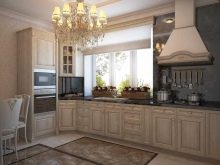
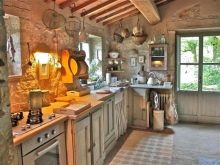

Ceiling and wall decoration
A characteristic feature of the Italian-style rooms is the presence of stucco moldings on the ceiling and walls. These can be various columns, sculptures and moldings. Often, an arch is used as a doorway, because this decor looks very unusual.Italian decor may contain moderation and grace, but there is no place for pretentiousness.
The ceiling in such a kitchen is more like the ceilings in country houses or villas. The surface is most often decorated with massive wood beams, or their imitation is used. Placing spotlights between the beams adds softness and Italian warmth to the room.
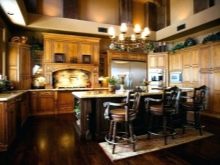
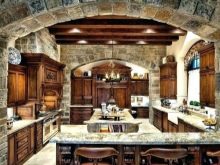
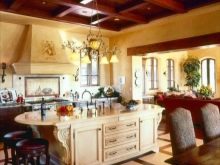
If earlier the ceiling in Italian kitchens was vaulted and made of natural stone or ceramic cladding, today it can be well plastered and used with false beams. When choosing stretch ceilings, you should give preference to drawings in the form of wood or imitation of a marble or mosaic surface.
For wall decoration, decorative plaster is used, as well as stone or ceramic tiles, structural paint, mosaics or wood panels. When choosing tiles, it is better to use interpretations similar to mosaics. Materials that imitate old stones with traces of cracks and chips look good.
When decorating kitchens in the Italian style, rustic wall covering is often used under unplaned wood.
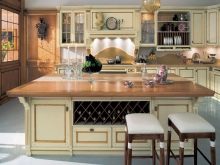


Choice of colors
Considering that Italy is a sunny country, her style should match this and include warm colors. The color scheme in this room can be varied, ranging from shades of ivory to pastel, white and cream colors. For the Mediterranean style, other, brighter shades are also inherent, giving the room bright colors, making it more colorful. So, a white kitchen will go well with furniture or accessories in bright contrasting shades. Blue, green and bright yellow colors will "liven up" the room and make the colors play in a new way.
Combining an olive wall background with white furnishings can be perfect for a Tuscan kitchen. This room will look no less impressive with terracotta or cream walls in combination with dark furniture.
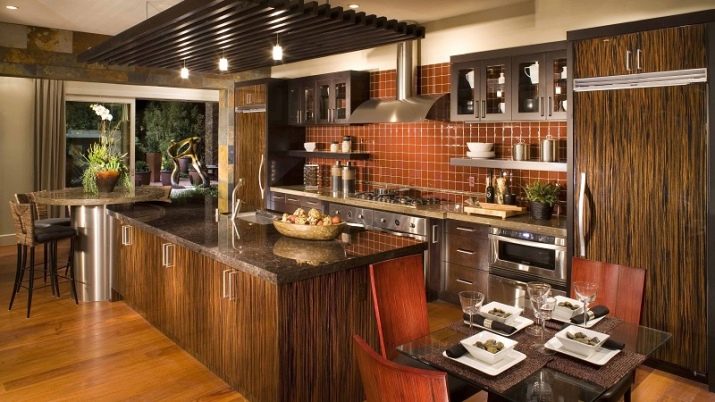
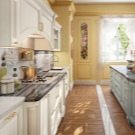

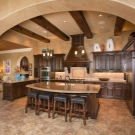

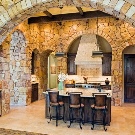
Various accessories will complete the room. In the kitchen, fresh flowers in various vases and pots, as well as light monochromatic curtains will be appropriate. The Italian-style kitchen will be decorated with curtains and curtains with patterns or stripes. In the event that the kitchen faces the sunny side, curtains with curtains are suitable - this will prevent the furniture from burning out when exposed to sunlight, as well as shelter from the heat.
The patterns on the curtains can be combined with fabric chair covers or other decorative elements.
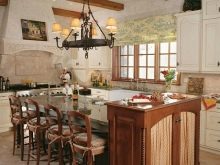
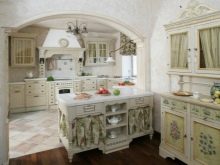

Interesting examples
Now let's look at some interesting role models.
- An option for the design of a small kitchen in the Italian style.
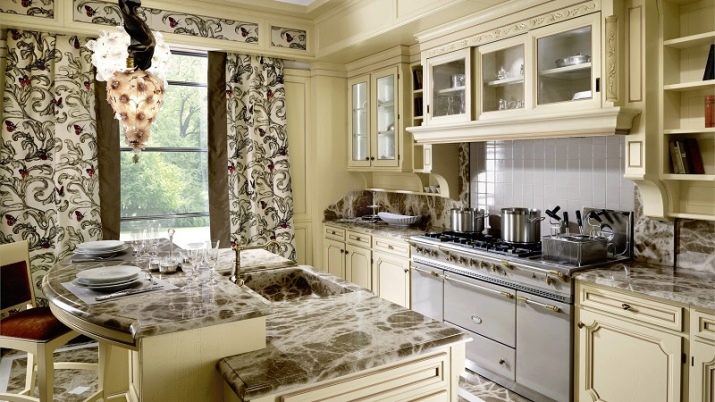
- Kitchen-living room, made in this style.
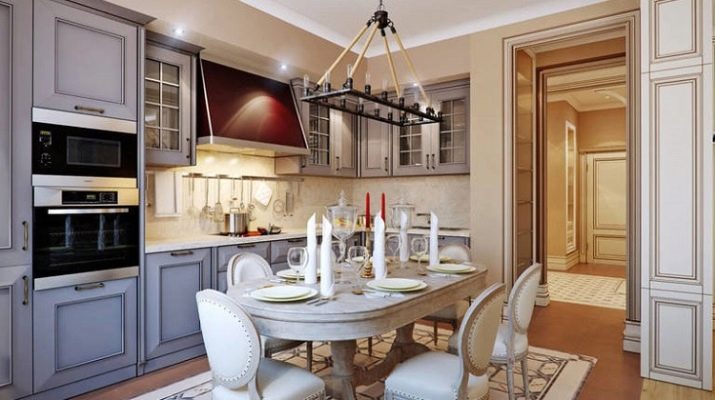
- The use of forged interior items makes the room stylish. In this case, you can add forged candlesticks or lamps, as well as furniture legs to the decor.
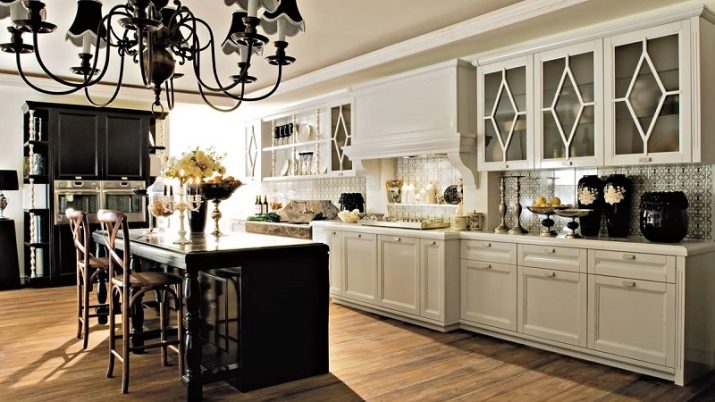
- Considering that the interior of the kitchen, made in the Italian style, should be as close as possible to the natural color and texture, then for a kitchen apron it is worth using tiles or mosaics that repeat the pattern of natural stone, marble or granite. The same principle applies to countertop selection.
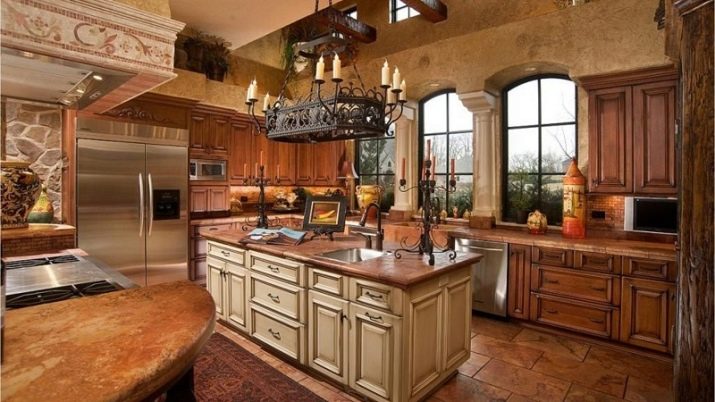
- Mosaics and frescoes can be used to decorate walls and ceilings.
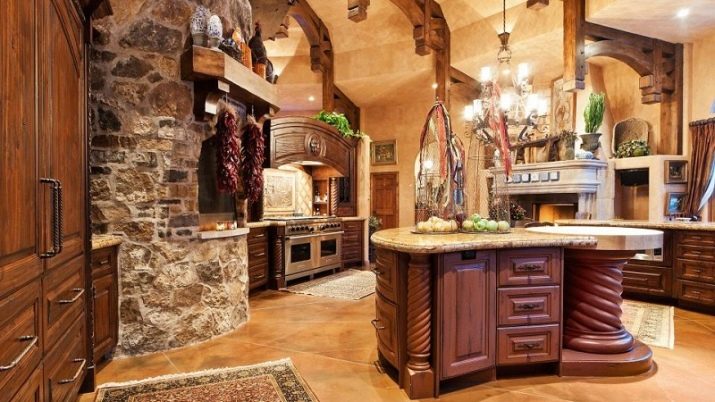
- The presence of the arch contributes to the creation of a special atmosphere, reminiscent of a relaxing holiday in a country house or villa. The arched opening can be used for both doors and windows. This technique will add respectability to the room.
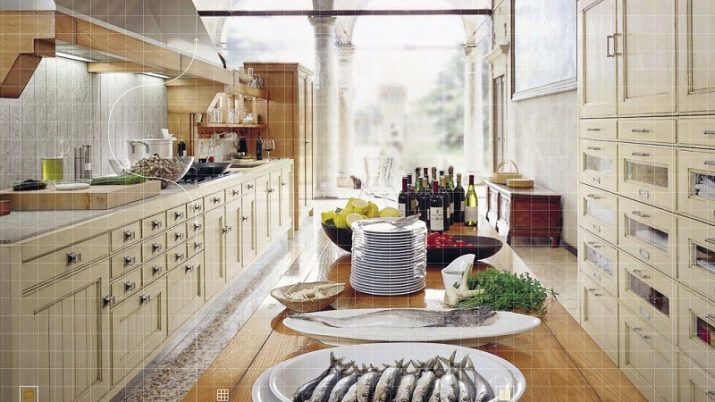
- Various decorative details will enhance the feeling of Italy. For greater effect, you can use wicker baskets, souvenir dishes, amphorae. As a supplement, it can even be beautifully bottled wine, cheese or olives.

- A table is a must-have attribute in the kitchen. In this case, the dining table should be long, because a large Italian family was placed behind it.In the past, in Italian families, dining tables were never painted or varnished. Currently, the owners often use this as a decor, giving the furniture a touch of a little vintage, artificially aging the furniture.
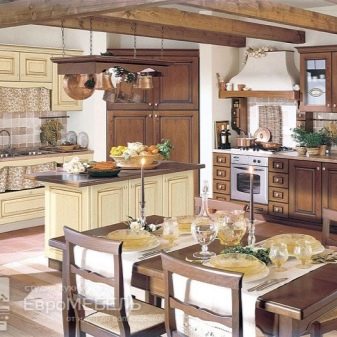

- A wardrobe with shelves, where a lot of kitchen utensils are stored, is a highlight of the Italian style. In such cabinets there are always a lot of beautiful dishes, decorative items made of ceramics or wood. There is a place on the shelves for all kinds of jars with herbs and spices, olive oil.
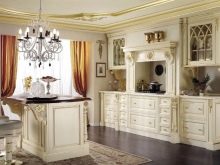
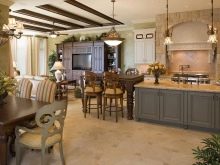
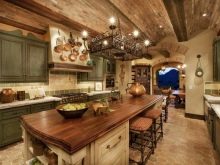
- To give the room a special color, bundles of onions or garlic are hung, baskets with herbs and flowers are placed.
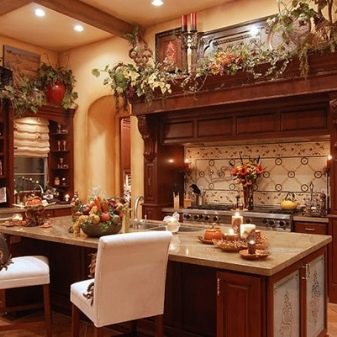
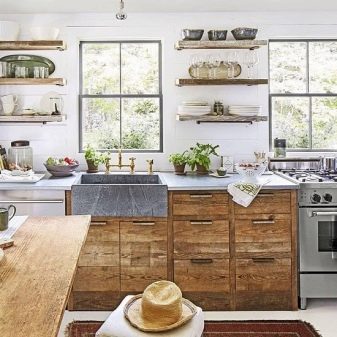
For information on how to decorate an Italian-style kitchen, see the next video.








